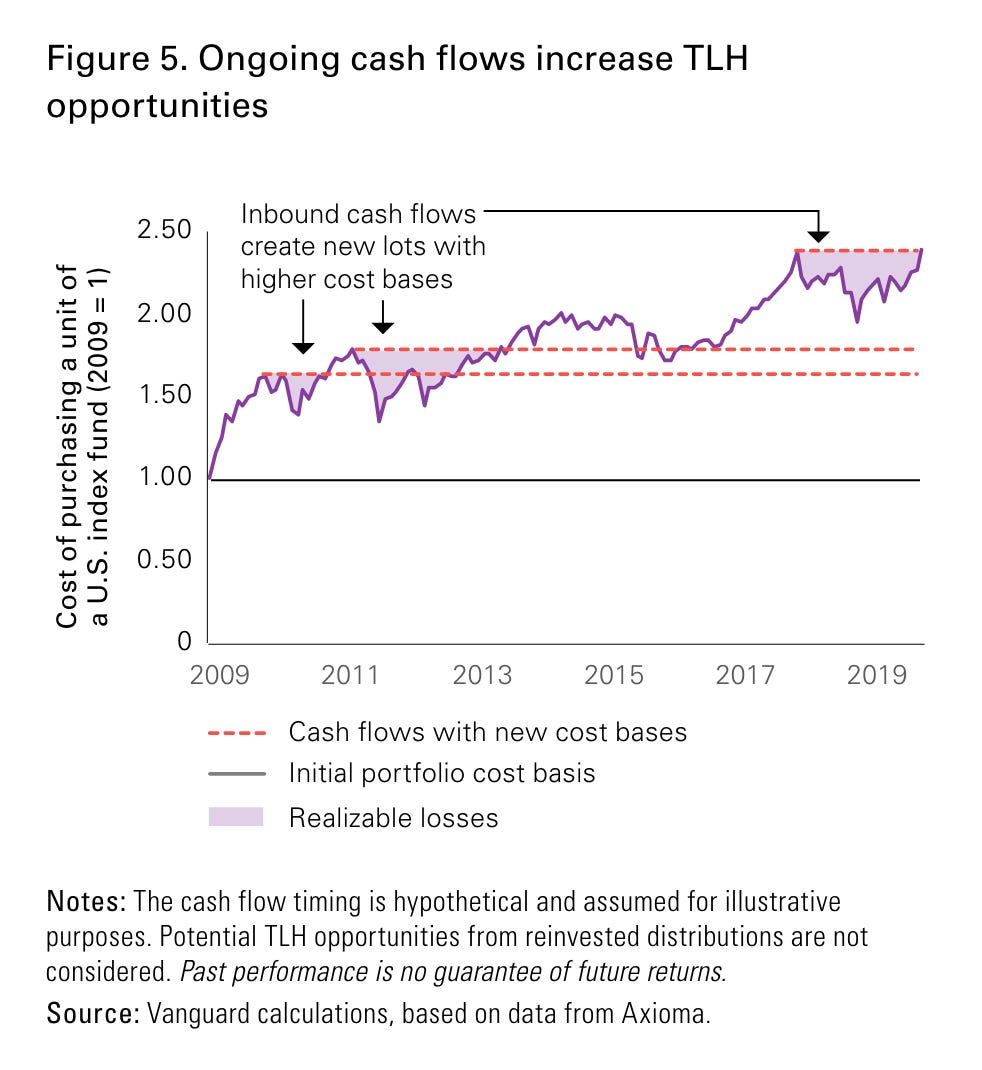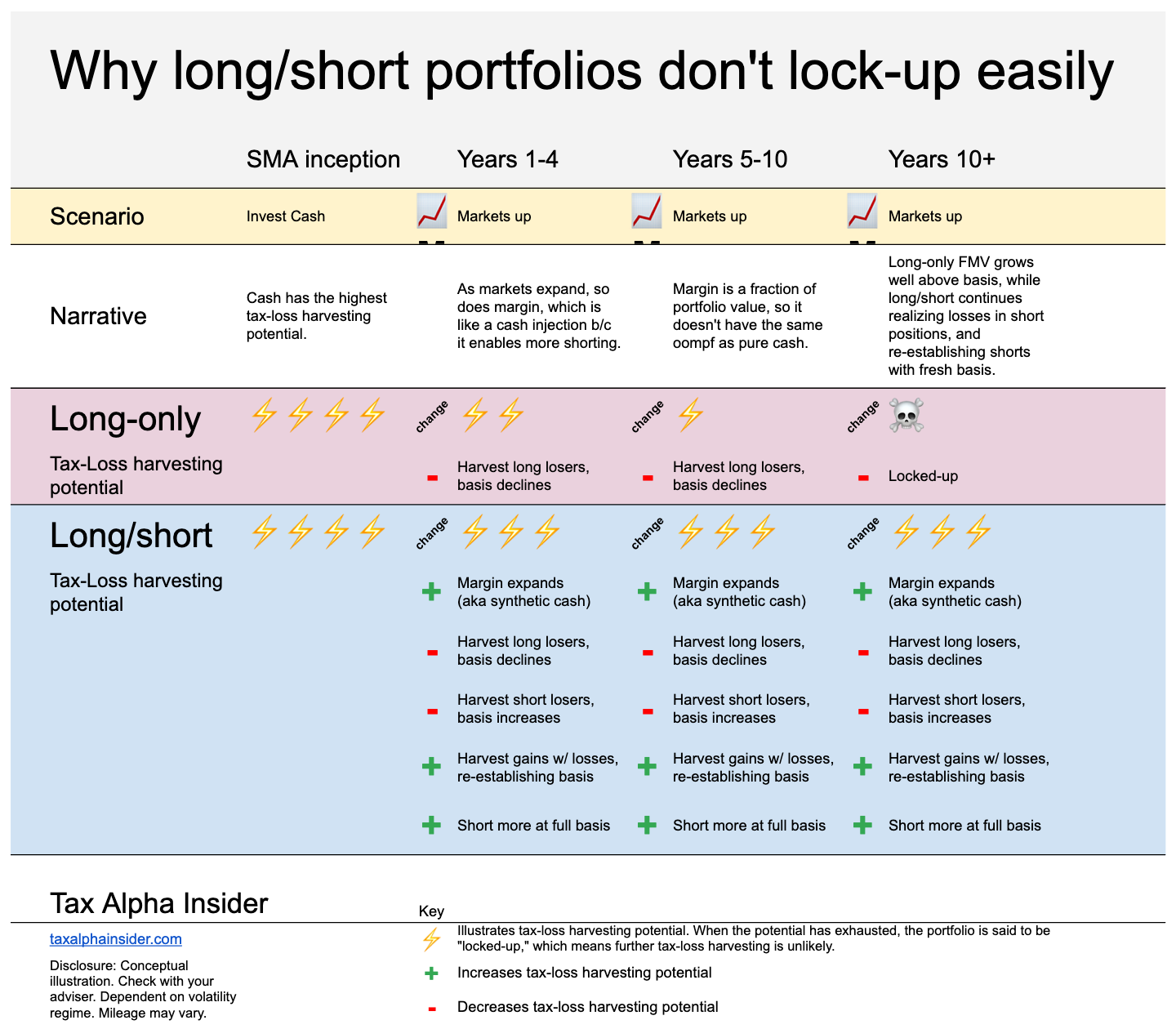Tax-aware long/short has a secret weapon
As long positions appreciate, portfolio equity grows and so does margin capacity, acting like a synthetic cash injection that sustains tax-loss harvesting potential
Tax-aware long/short has a secret weapon: margin
Margin allows tax-aware long/short strategies to conjure fresh cost basis out of thin air. That’s hyperbole, but not far off.
Get up to speed on tax-aware long/short strategies like the 130/30 and 250/150 here
In a long-only implementation, the portfolio’s tax-loss harvesting potential is limited by cost basis.
After each tax-loss harvest, the cost basis is lower and eventually too low to harvest. This is called “lock-in” since rebalancing could mean realizing net capital gains, and investors may prefer holding rather than realizing.
Investors may contribute additional cash to reinvigorate tax-loss harvesting potential, as Vanguard shows here.

Suppose an investor establishes a long/short portfolio with cash, shorts 30% of the portfolio, and uses the short-sale proceeds as collateral to take out a margin loan. That loan is used to purchase an additional 30% in long exposure, creating a 130/30 portfolio. At inception, this portfolio has maximum tax-loss harvesting potential.
In short positions, tax-loss harvesting is limited by cost basis, just like in long positions. However, as markets tend to drift upward, 1) many short positions may generate harvestable losses, and 2) appreciation in long positions boosts portfolio equity and margin capacity.
To see this in action, read the following infographic showing how margin sustains tax-loss harvesting potential. The gist is that margin acts like a synthetic cash injection, allowing portfolios to introduce new short positions with high cost basis (and high tax-loss harvesting potential).





